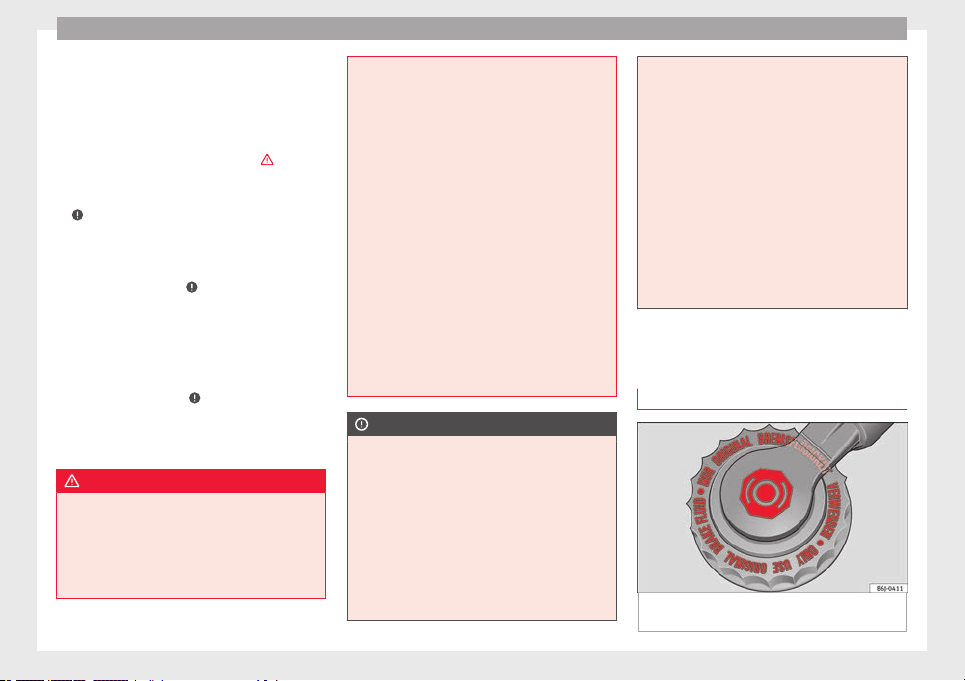Loading ...
Loading ...
Loading ...

Advice
Topping up the engine coolant level
●
Always protect your face, hands and arms
from hot coolant and steam using a large,
thick cloth over the coolant expansion tank
cap.
●
Remove the cap very carefully ››› .
●
Only refill using new
engine coolant ac-
c
or
ding to SEAT specifications (››› page 150)
›››
.
●
The engine coolant level should be be-
tween the marks on the coolant expansion
tank ››› Fig. 109
.
Do not exceed the top level
of
the marked area ›››
.
●
Screw on the cap tightly.
●
If, in the event of an emergency, you have
no coolant that is compliant to the required
specifications (››› page 150), do not use an-
other type of additive. Instead, top up with
distilled water only
›
›› . Then re-establish
the correct proportion of the mixture with the
correct additive as soon as possible
››› page 150
.
WARNING
Hot vapours and coolant can cause serious
burns.
●
Never open the coolant expansion tank if
steam or coolant is coming from the engine
compartment. Wait until you cannot see or
hear any steam or coolant escaping.
●
Always wait until the engine has complete-
ly cooled before very carefully opening the
expansion tank cap. Contact with hot ele-
ments of the engine can cause skin burns.
●
When the engine is warm or hot, the cool-
ing system is pressurised. Do not unscrew
the cap on the expansion tank when the en-
gine is hot. Otherwise, coolant may spray out
under pressure causing burns and serious in-
jury.
–
Carefully and slowly unscrew the cap an-
ti-clockwise, gently pressing down on it.
–
Always protect your face, hands and arms
from hot coolant and steam using a large,
thick cloth.
●
When refilling liquids, avoid spilling them
on parts of the engine and the exhaust sys-
tem. Spilled liquids could cause a fire. Under
specific circumstances, the ethylene glycol
can catch fire.
CAUTION
●
Top up with distilled water only. Any other
type of water may lead to considerable rust-
ing in the engine due to its chemical compo-
nents. This could consequently damage the
engine. If you have not used distilled water
but another type of water to top up the cool-
ant, a specialised workshop must immediate-
ly replace all of the fluid in the engine cooling
system.
●
Only top up coolant to the top level of the
marked area ››› Fig. 109. Otherwise the ex-
cess coolant will be forced out of the cooling
system when the engine is hot, causing dam-
age.
●
If a lot of liquid coolant has been lost, wait
for the engine to cool down completely before
adding coolant. Extensive coolant loss is an
indication of leaks in the engine cooling sys-
tem. Have the engine cooling system inspec-
ted immediately by a specialised workshop.
Otherwise engine damage may occur.
●
When refilling or changing service liquids,
ensure that you put the liquids into the right
tank. Making a mistake when refilling could
cause serious malfunctions and damage the
engine!
Brake fluid
Checking the brake fluid level
Fig. 111 In the engine compartment: brake
fluid reservoir, lid
152
Loading ...
Loading ...
Loading ...